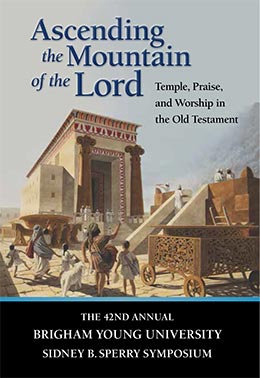The Tree of Knowledge as the Veil of the Sanctuary
Jeffrey M. Bradshaw
Jeffrey M. Bradshaw, “The Tree of Knowledge as the Veil of the Sanctuary,” in Ascending the Mountain of the Lord: Temple, Praise, and Worship in the Old Testament (2013 Sperry Symposium), ed. Jeffrey R. Chadwick, Matthew J. Grey, and David Rolph Seely (Provo, UT: Religious Studies Center, Brigham Young University; Salt Lake City: Deseret Book, 2013), 49–65.
Jeffrey M. Bradshaw, PhD, is a senior research scientist at the Florida Institute for Human and Machine Cognition (IHMC) in Pensacola, Florida (http://www.ihmc.us/groups/jbradshaw ; http://www.templethemes.net ).
One thing that has always perplexed readers of Genesis is the location of the two special trees within the Garden of Eden. Although scripture initially applies the phrase “in the midst” only to the tree of life (Genesis 2:9), the tree of knowledge is later said by Eve to be located there too (see Genesis 3:3). [1] In the context of these verses, the Hebrew phrase corresponding to “in the midst” literally means “in the center.” [2] How can both trees be in the center?
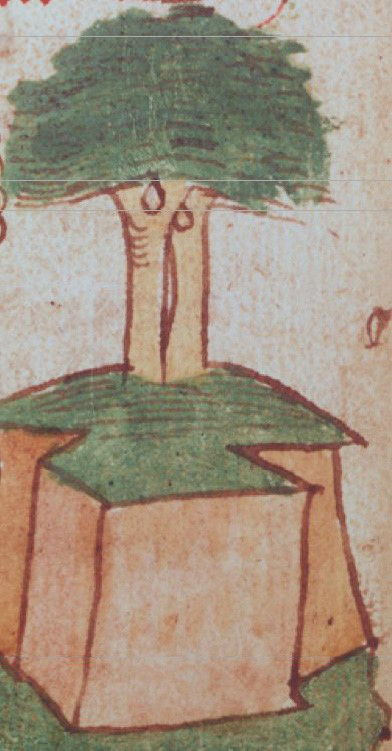 Fig. 1. Intertwined Tree of Life and Tree of Knowledge in the Center of a Mountainous Garden of Eden Setting. From Lutwin, How the Devil Deceived Eve (detail), early fourteenth century.
Fig. 1. Intertwined Tree of Life and Tree of Knowledge in the Center of a Mountainous Garden of Eden Setting. From Lutwin, How the Devil Deceived Eve (detail), early fourteenth century.
Elaborate explanations have been attempted to describe how both the tree of life and the tree of knowledge could share the center of the Garden of Eden. [3] For example, it has been suggested that these two trees were in reality different aspects of a single tree, that they shared a common trunk, or that they were somehow intertwined, as shown in figure 1.
As we consider the story more carefully as a whole, it will become apparent why the confusion about the location of the two trees in the Genesis account may well be intentional. First, however, a brief review of the symbolism of the “sacred center” in ancient thought will help clarify the important roles that the tree of life and the tree of knowledge played “in the midst” of the Garden of Eden. One must consider the entire layout of the Garden of Eden as a sanctuary in order to make sense of the concept of the tree of knowledge as the veil of the sanctuary.
The Symbolism of the “Sacred Center”
Michael A. Fishbane describes the Garden of Eden as “an axis mundi. From it radiate primal streams to the four quarters. . . . It is the navel or omphalos,” and the tree of life stands at “the center of this center.” [4] Explaining the choice of a tree to represent the concepts of life, earth, and heaven in ancient cultures, Terje Stordalen writes, “Every green tree would symbolize life, and a large tree—rooted in deep soil and stretching towards the sky—potentially makes a cosmic symbol. [5] “In both cases it becomes a ‘symbol of the centre.’” [6]
Ezekiel 28:13 places Eden on the mountain of God. [7] “Eden, as a luxuriant cosmic mountain becomes an archetype or symbol for the earthly temple.” [8] Described by Isaiah as “the mountain of the Lord’s house” (Isaiah 2:2), the Jerusalem temple can be identified—like Eden—as a symbol of the center. [9] Israelite traditions asserted that the foundation stone in front of the ark within the Holy of Holies of the temple at Jerusalem “was the first solid material to emerge from the waters of creation [see Psalm 104:7–9], and it was upon this stone that the Deity effected creation.” [10] As a famous passage in the Midrash Tanhuma states:
Just as a navel is set in the middle of a person, so the land of Israel is the navel of the world [cf. Ezekiel 38:12; see also Ezekiel 5:5]. . . . The land of Israel sits at the center of the world; Jerusalem is in the center of the land of Israel; the sanctuary is in the center of Jerusalem; the Temple building is in the center of the sanctuary; the ark is in the center of the Temple building; and the foundation stone, out of which the world was founded, is before the Temple building. [11]
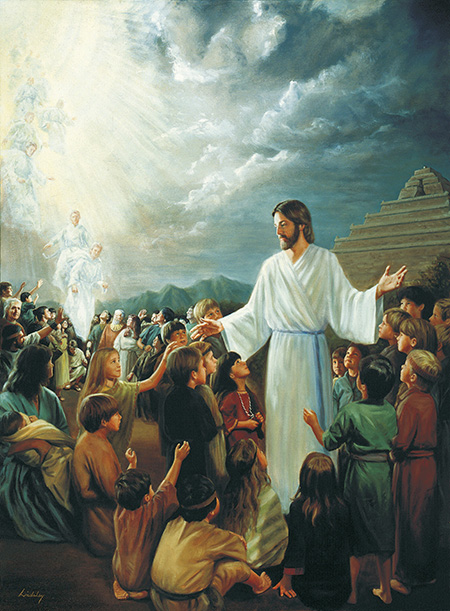
In such traditions, the center is typically depicted as the most holy place, and the degree of holiness decreases in proportion to the distance from that center. For instance, we can see this phenomenon in examples where the Lord himself is portrayed as standing in the center of sacred space. S. Kent Brown observes how at his first appearance to the Nephites Jesus “stood in the midst of them” (3 Nephi 11:8). Brown cites other Book of Mormon passages associating the presence of the Lord “in the midst” to the placement of the temple and its altar. [12] He also noted a similar configuration when Jesus blessed the Nephite children (fig. 2):
As the most Holy One, [the Savior] was standing “in the midst,” at the sacred center (3 Nephi 17:12–13). The children sat “upon the ground round about him” (3 Nephi 17:12). When the angels “came down,” they “encircled those little ones about.” In their place next to the children, the angels themselves “were encircled about with fire” (3 Nephi 17:24). On the edge stood the adults. And beyond them was . . . profane space which stretched away from this holy scene. [13]
Fig. 2. David Lindsley, Behold Your Little Ones, 1983.
Jesus’ placement of the children so that they immediately surrounded him—their proximity exceeding even that of the encircling angels and accompanying fire—conveyed a powerful visual message about their holiness—namely, that “whosoever . . . shall humble himself as this little child, the same is greatest in the kingdom of heaven” (Matthew 18:4). Hence, Jesus’ instructions to them: “Behold your little ones” (3 Nephi 17:23).
Moses’ vision of the burning bush brings together three prominent symbols of the sacred center discussed above: the tree, the mountain, and the Lord himself (fig. 3). Directly tying this symbolism to the Jerusalem Temple, Nicolas Wyatt concludes, “The Menorah is probably what Moses is understood to have seen as the burning bush in Exodus 3.” [14] Thus we might see Jehovah as being represented to Moses as one who dwells on a holy mountain in the midst of the burning glory of the tree of life.
The Tree of Knowledge as the Veil of the Sanctuary
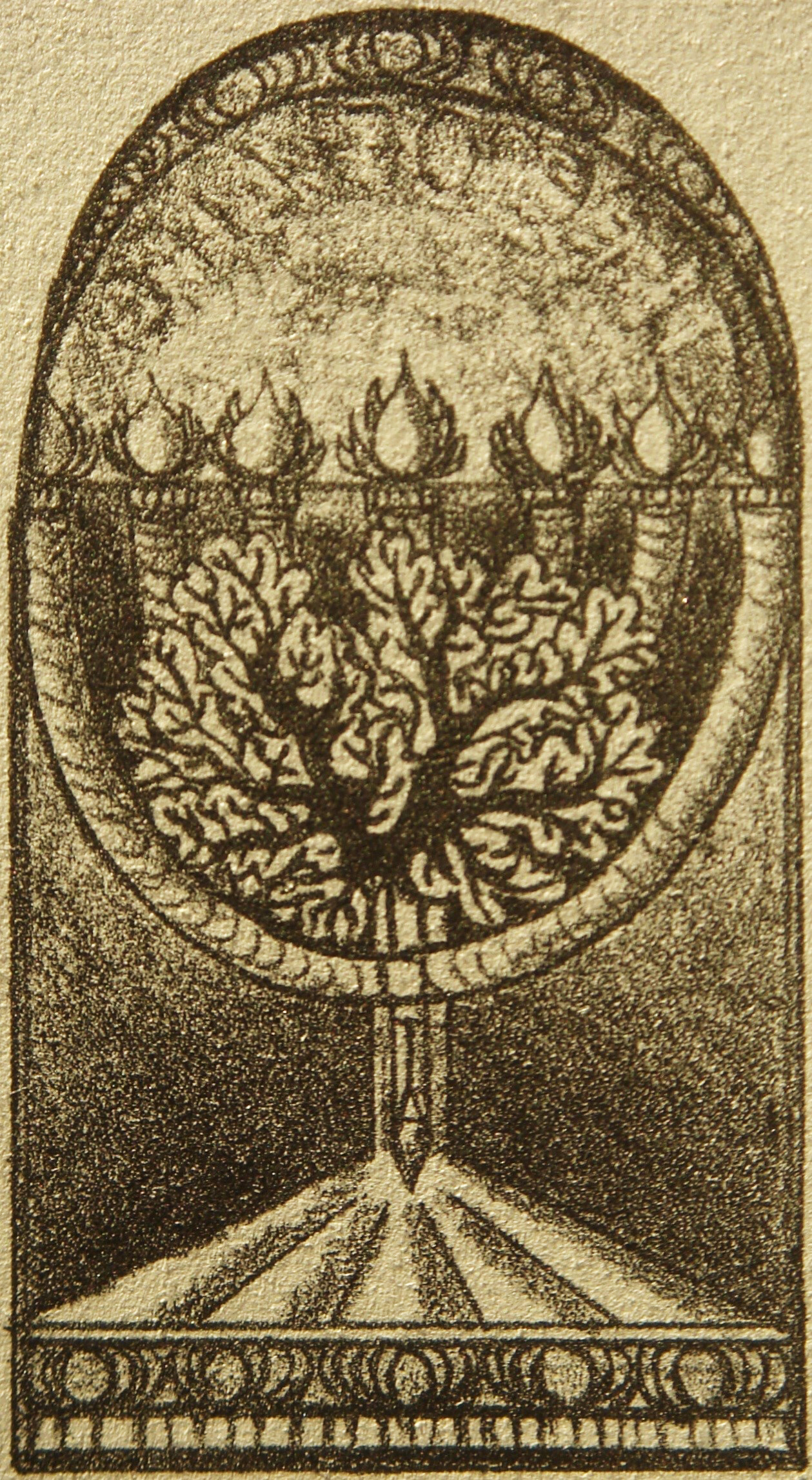
Having explored the concept of the sacred center, we return to the question of how both the tree of life and the tree of knowledge could have shared the center of the Garden of Eden. Jewish commentary provides additional intriguing clues.
After describing how the Tree of Life was planted “precisely in the middle of the garden,” [15] The Zohar goes on to assert that the tree of knowledge of good and evil was “not precisely in the middle.” [16] Clarifying what this might mean, an interesting Jewish tradition about the placement of the two trees is the idea that the foliage of the tree of knowledge hid the tree of life from direct view and that “God did not specifically prohibit eating from the tree of life because the tree of knowledge formed a hedge around it; only after one had partaken of the latter and cleared a path for himself could one come close to the Tree of Life.” [17] In other words, although both trees were located, relatively speaking, in the central portion of Eden, one had to “pass through” the tree of knowledge that was “not precisely in the middle” before one could see and gain access to the tree of life that was “precisely in the middle of the garden.”
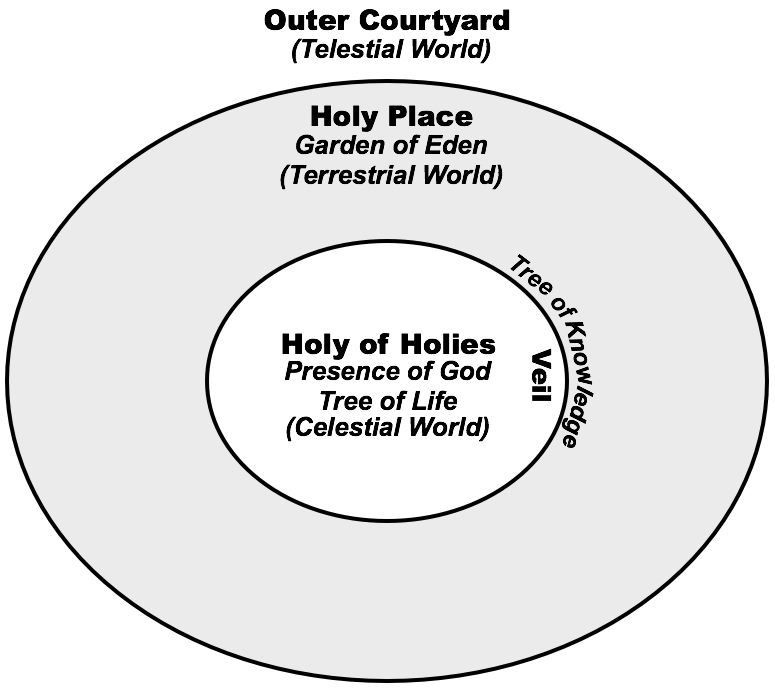 Fig. 4. Zones of Sacredness in Eden and in the Temple. [18]
Fig. 4. Zones of Sacredness in Eden and in the Temple. [18]
Consistent with this Jewish tradition about the placement of the trees and with scholarship that sees the Garden of Eden as a temple prototype, [19] Ephrem the Syrian, a fourth-century Christian, called the tree of knowledge “the veil for the sanctuary.” [20] He pictured Paradise as a great mountain, with the tree of knowledge providing a permeable boundary partway up the slopes (figure 4). The tree of knowledge, Ephrem concluded, “acts as a sanctuary curtain [i.e., veil] hiding the Holy of Holies, which is the Tree of Life higher up.” [21] In addition to this inner boundary, Jewish, Christian, and Muslim sources sometimes speak of a “wall” surrounding the whole of the garden, separating it from the “outer courtyard” of the mortal world. [22]
In explaining his conception of Eden, Ephrem cited parallels with the division of the animals on Noah’s ark and the demarcations on Sinai separating Moses, Aaron, the priests, and the people, as shown in figure 5. [23] According to this way of thinking, movement inward toward the sacred center was symbolically equivalent to moving upward toward the top of the sacred mountain. Recall that on Sinai, Israel was gathered in three groups: “the masses at the foot of the mountain, where they viewed God’s ‘Presence’ from afar; the Seventy part way up; and Moses at the very top, where he entered directly into God’s Presence.” [24] Likewise, Ephrem described the “lower, second, and third stories” [25] of the temple-like ark (see Genesis 6:16) so as to highlight the righteousness of Noah and to distinguish him from the animals and the birds. [26] Finally, as explained previously, Ephrem pictured Eden as a great mountain, with the tree of knowledge providing a boundary partway up the slopes.
Careful analysis of the narrative features of the Genesis account provides support for these perspectives about the nature of Adam and Eve’s actions. Notice that the dramatic irony of the story is heightened by the fact that while the reader is informed about both trees (see Moses 3:9), Adam and Eve are only specifically told about the tree of knowledge (see Moses 3:16–17). As we will see below, the subtle conflation of the location of two trees in the sacred center of the Garden of Eden prepares readers for the confusion that later ensues in the dialogue with the serpent, and sets the stage for the transgression of Adam and Eve. Given his knowledge of both trees, Satan is enabled to exploit their ignorance to his advantage.
 Fig. 5. Ephrem the Syrian’s Conception of Eden, the Ark, and Sinai.
Fig. 5. Ephrem the Syrian’s Conception of Eden, the Ark, and Sinai.
A “Temple” Setting for the Transgression of Adam and Eve
At the moment of temptation, Satan deliberately tries to confuse Eve. The devil knows that there are two trees in the midst of the garden, but only the tree of knowledge is visible to Eve (see Moses 4:9) since, according to Ephrem, the tree of life is hidden behind it. [27] To add to the confusion, Satan “made the two trees seem identical: the Tree of the Knowledge of Good and Evil would open her eyes, and she would be like God, knowing both good and evil. Almost the same was true of the tree of life, for Wisdom opened the eyes of those who ate her fruit, and as they became wise, they became divine.” [28]
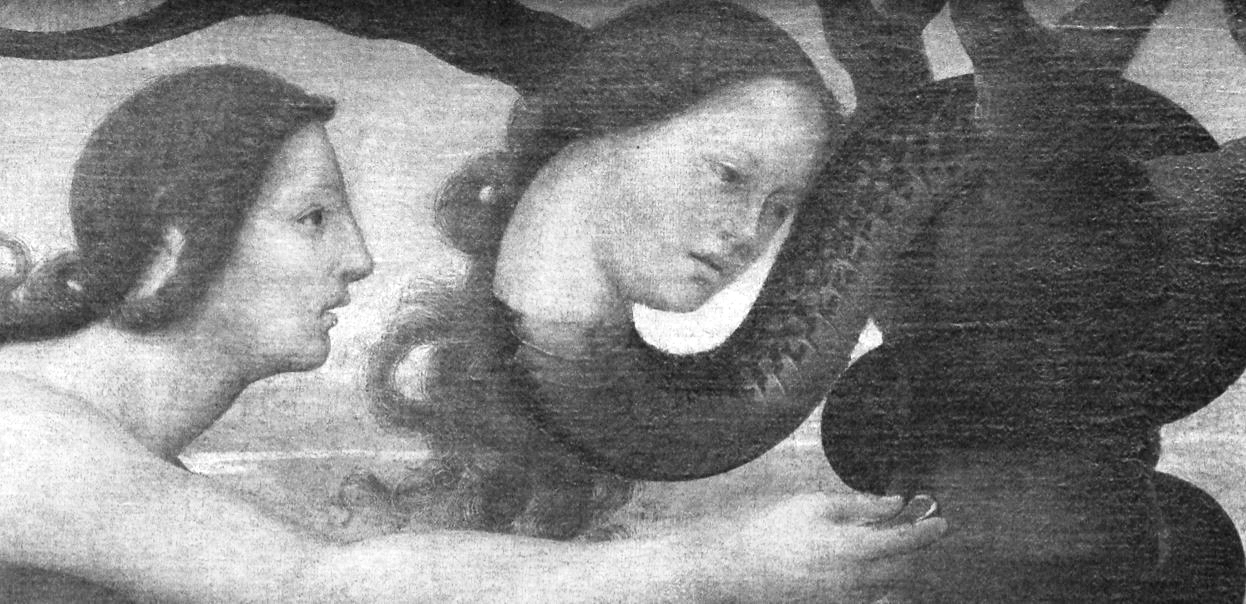 Fig. 6. Giuliano Bugiardini, Adam, Eve (detail), ca. 1510.
Fig. 6. Giuliano Bugiardini, Adam, Eve (detail), ca. 1510.
Another theme of confusion stems from Satan’s efforts to mask his identity. The painting shown in figure 6 portrays the tempter in the dual guise of a serpent and a woman whose hair and facial features exactly mirror those of Eve. This common form of medieval portrayal was not intended to assert that the woman was devilish, but rather to depict the devil as trying to allay Eve’s fears, deceptively appealing to her by appearing in a form that resembled her own. [29] Though Satan is not said in scripture to have appeared to Eve as a woman, he did try to deceive her when he represented himself as a serpent, as will be explained below.
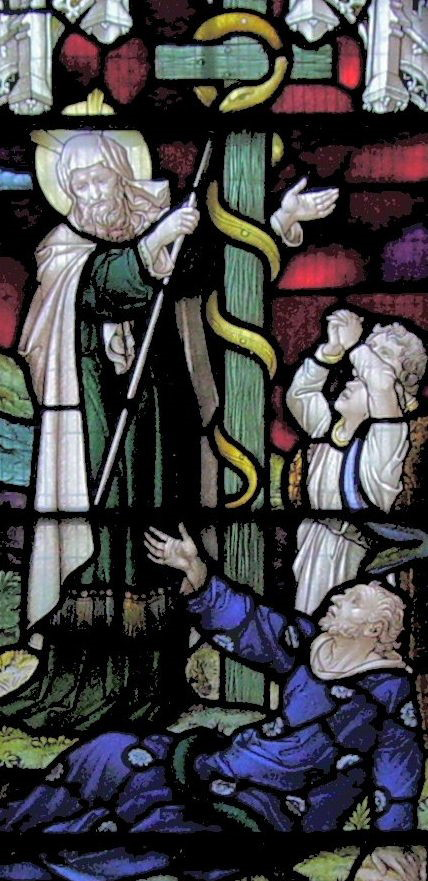 Fig. 7. Moses and the Brazen Serpent (detail), ca. 1866.
Fig. 7. Moses and the Brazen Serpent (detail), ca. 1866.
Of great importance in understanding the story of the transgression of Adam and Eve is the fact that the serpent is a frequently used representation of the Messiah and his life-giving power, as shown, for example, in this depiction of Moses holding up the brazen serpent (fig. 7). [30] Moreover, with specific relevance to the symbolism of the sacred location where he appeared to Eve in the Garden of Eden, evidence suggests that the form of the seraphim, whose function it was to guard the divine throne at the sacred center of the heavenly temple, was that of a fiery winged serpent. [31] This idea gives new meaning to the statement of Nephi that the “being who beguiled our first parents . . . transformeth himself nigh unto an angel of light” (2 Nephi 9:9).
In the context of the temptation of Eve, Richard D. Draper, S. Kent Brown, and Michael D. Rhodes conclude that Satan “has effectively come as the Messiah, offering a promise that only the Messiah can offer, for it is the Messiah who will control the powers of life and death and can promise life, not Satan.” [32] Not only has the devil come in guise of the Holy One, he seems to have deliberately appeared, without authorization, at a particularly sacred place in the garden. [33] If it is true, as Ephrem the Syrian believed, that the tree of knowledge was a figure for “the veil for the sanctuary,” [34] then Satan positioned himself, in the extreme of sacrilegious effrontery, as the very “keeper of the gate” (2 Nephi 9:41). Thus, in the apt words of Catherine Thomas, Eve was induced to take the fruit “from the wrong hand, having listened to the wrong voice.” [35]
This raises a question: since the knowledge imparted by the transgression of Adam and Eve was good, helping them become more like God (see Moses 4:28), why did Satan encourage—rather than prevent—their eating of the fruit of the tree of knowledge? Surprisingly, the scriptural story makes it evident that their transgression must have been as much an important part of the devil’s strategy as it was a central feature of the Father’s plan. In this one respect, the programs of God and Satan seem to have had something in common.
However, the difference in intention between God and Satan became apparent when it was time for Adam and Eve to take the next step. [36] In this regard, the scriptures seem to suggest that the adversary wanted Adam and Eve to eat of the fruit of the tree of life directly after they partook of the tree of knowledge—a danger that moved God to take immediate preventive action by the placement of the cherubim and the flaming sword to guard “the way of the tree of life” (see Moses 4:28–31; Alma 12:23, 42:2–3). For had Adam and Eve eaten of the fruit of the tree of life at that time, “there would have been no death” and no “space granted unto man in which he might repent”—in other words, no “probationary state” to prepare for a final judgment and resurrection (see Alma 12:23–24).
The Father did intend—eventually—for Adam and Eve to partake of the tree of life, but not until they had learned through mortal experience to distinguish good from evil. [37]
The Forbidden Fruit as a Form of Knowledge
Whether speaking of the heavenly temple or of its earthly models, the theme of access to revealed knowledge is inseparably connected with the passage through the veil. Such knowledge includes the restoration of things from the former world that must be brought to “remembrance” (John 14:26) because they have been forgotten on earth.
With respect to the heavenly temple, scripture and tradition amply attest of how a knowledge of eternity is available to those who are permitted to enter within the divine veil. [38] For example, Jewish and Christian accounts speak of a blueprint of eternity that is worked out in advance and shown on the inside of that veil to prophetic figures as part of their heavenly ascent. [39] In a similar vein, Islamic tradition speaks of a “white cloth from Paradise” upon which Adam saw the fate of his posterity. [40] Nibley gives the “great round” of the hypocephalus as an Egyptian attempt to capture the essence of such pictures of eternity and shows how similar concepts have appeared in the literature of other ancient cultures. [41]
On the other hand, with respect to earthly temples, a conventional answer to the question of what kind of knowledge the tree of knowledge provided is supplied by Psalm 19:8. There, in similar terms to the description of the forbidden fruit in Genesis 3:6 (“pleasant to the sight, good for food and to be desired to make one wise”), God’s law is described as “making wise the simple, rejoicing the heart and enlightening the eyes.” [42] Gordon J. Wenham observes, “The law was of course kept in the Holy of Holies [of the temple]: the decalogue inside the ark and the book of the law beside it (see Exodus 25:16, Deuteronomy 31:26). Furthermore, Israel knew that touching the ark or even seeing it uncovered brought death, just as eating from the tree of knowledge did (see Numbers 4:20, 2 Samuel 6:7).” [43]
However, given explicit admissions in Jewish tradition about elements of the first temple that were later lost, plausibly including things that were once contained in the temple ark, it is not impossible that the knowledge in question may have included something more than the Ten Commandments and the Torah as we now know them. [44] Having carefully scrutinized the evidence, Margaret Barker concluded that the lost items were “all associated with the high priesthood.” [45] Also probing the significance of the lost furniture “list of the schoolmen,” Nibley, like Barker, specifically connected the missing “five things” to lost ordinances of the high priesthood. [46] By piecing together the ancient sources, it may be surmised that the knowledge revealed to those made wise through entering in to the innermost sanctuary of the Temple of Solomon included an understanding of premortal life, the order of creation, and the eternal covenant [47] and that it “provided a clue to the pattern and future destiny of the universe” [48] that “gave power over creation” when used in righteousness. [49] Thus the rending of the veil at the death of Christ symbolized not only renewed access to the divine presence in heaven but also the knowledge revealed in earthly temples that makes such access possible (fig. 8). [50]
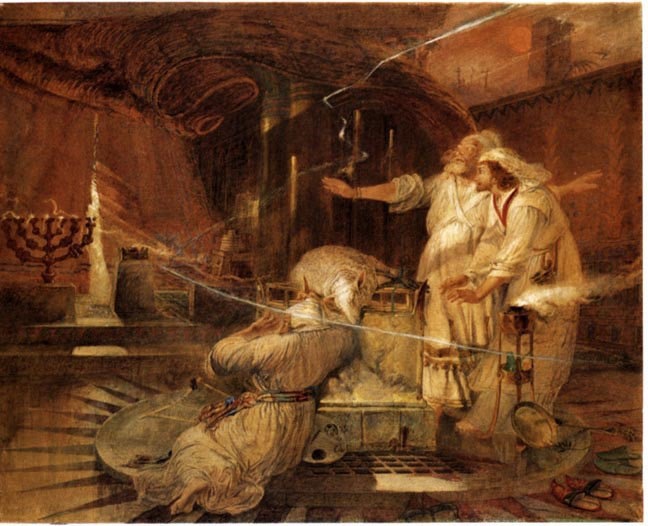 Fig. 8. William Bell Scott, 1811–90: The Rending of the Veil, 1867–68.
Fig. 8. William Bell Scott, 1811–90: The Rending of the Veil, 1867–68.
Consistent with this general idea about the nature of the forbidden fruit, Islamic traditions insist that the reason Satan was condemned after the Fall was because he had claimed that he would reveal a knowledge of certain things to Adam and Eve. In deceptive counterpoint to God’s authentic teachings to Adam about a series of sacred names that he was to use to prove his worthiness before the angels, [51] Satan is portrayed in one Islamic account as recruiting his accomplice, the “fair and prudent” serpent, by promising that he would reveal to it “three mysterious words” which would “preserve [it] from sickness, age, and death.” [52] Having by this means won over the serpent, Satan then directly equates the effect of knowing these words with the eating of the forbidden fruit by promising the same protection from death to Eve if she will but partake. [53]
The fifteenth-century Adamgirk‘ asks, “If a good secret [or mystery [54]] was in [the evil fruit], why did [God] say not to draw near?” [55] and then answers its own question implicitly. Simply put, the gift by which Adam and Eve would “become divine,” [56] and for which the tree of knowledge constituted a part of the approach, was, as yet, “an unattainable thing [t]hat was not in its time.” [57] Though God intended Adam and Eve to advance in knowledge, it seems that the condemnation of Satan came because he had acted deceptively and without authorization, in the realization that introducing the fruit of the tree of knowledge to Adam and Eve under circumstances of disobedience and unpreparedness would bring the consequences of the Fall upon them, putting them in a position of mortal danger. [58] Moreover, as was mentioned previously, it is clear that if Satan could have also induced Adam and Eve to partake of the tree of life at that time, there would have been even more serious consequences.
There is no question that the knowledge itself was good. However, some kinds of knowledge are reserved to be revealed by the Father himself “in his own time, and in his own way, and according to his own will” (D&C 88:68). As the Prophet Joseph Smith taught:
That which is wrong under one circumstance, may be, and often is, right under another. . . .
A parent may whip a child, and justly, too, because he stole an apple; whereas if the child had asked for the apple, and the parent had given it, the child would have eaten it with a better appetite; there would have been no stripes; all the pleasure of the apple would have been secured, all the misery of stealing lost.
This principle will justly apply to all of God’s dealings with His children. Everything that God gives us is lawful and right; and it is proper that we should enjoy His gifts and blessings whenever and wherever He is disposed to bestow; but if we should seize upon those same blessings and enjoyments without law, without revelation, without commandment, those blessings and enjoyments would prove cursings and vexations. [59]
By way of analogy to the situation of Adam and Eve and its setting in the temple-like layout of the Garden of Eden, recall that service in Israelite temples under conditions of worthiness was intended to sanctify the participants. However, as taught in Levitical laws of purity, doing the same “while defiled by sin, was to court unnecessary danger, perhaps even death.” [60]
Hugh Nibley succinctly summed up the situation: “Satan disobeyed orders when he revealed certain secrets to Adam and Eve, not because they were not known and done in other worlds, but because he was not authorized in that time and place to convey them.” [61] Although Satan had “given the fruit to Adam and Eve, it was not his prerogative to do so—regardless of what had been done in other worlds. (When the time comes for such fruit, it will be given us legitimately.)” [62]
Concluding Thoughts
Jewish and Christian teachings that the tree of knowledge symbolized the veil of the Garden of Eden sanctuary not only provide a coherent explanation for some puzzling aspects of the story of Adam and Eve, but are also consistent with an interpretive approach that attempts to comprehend how its story plot fits within larger metaplots throughout the Pentateuch—and sometimes even further afield. For example, we have already discussed how Ephrem related the three divisions of the templelike layout of the Garden of Eden to the three levels of Noah’s ark and the three groups of Israelites at Mount Sinai. Recurring throughout the Old Testament and ancient Near East traditions are allusions to the layout of sacred spaces—as well as accounts of serious consequences for those who attempt unauthorized entry through the veil into the innermost sanctuary. [63]
This general thesis is useful as far as it goes. For example, in the stories of the transgressions of Adam and Eve, of the “sons of God” who married the “daughters of men,” and of the builders of the Tower of Babel, we cannot fail to observe the common story thread concerning a God who places strict boundaries between the human and the divine. However, we must not forget a significant and opposite theme in Genesis 1–11—namely, that within some of these same chapters God is also portrayed as having sought to erase the divine-human boundary for a righteous few, drawing them into his very presence. [64] The prime examples of this motif are, of course, Enoch and Noah, of whom it was explicitly said that they “walked with God.” [65] Happily, Latter-day Saints know that they can add the names of Adam and Eve to the exceptional list containing these two shining examples of righteousness. The Book of Moses avers that our first parents eventually had “all things . . . confirmed unto [them] by an holy ordinance” (Moses 5:59). From the story of Adam and Eve and their family found in modern revelation and latter-day temples, we know that the story of the Fall “is not an account of sin alone but the beginning of a drama about becoming a being who fully reflects God’s very own image. Genesis is not only about the origins of sin; it is also about the foundations of human perfection. The work that God has begun in creation he will bring to completion.” [66]
Notes
Portions of this article were adapted from Jeffrey M. Bradshaw, Temple Themes in the Book of Moses (Salt Lake City: Eborn, 2010), 69–70, 74–76, 84, 96–103. See www.templethemes.net.
[1] For a brief survey on the question of one or two trees, and related textual irregularities that point to a theme of deliberate confusion consistent with the thesis of this chapter, see Tryggve N. D. Mettinger, The Eden Narrative: A Literary and Religio-historical Study of Genesis 2–3 (Winona Lake, IN: Eisenbrauns, 2007), 5–11.
[2] See, e.g., Meir Zlotowitz and Nosson Scherman, Bereishis / Genesis: A New Translation with a Commentary Anthologized from Talmudic, Midrashic and Rabbinic Sources (Brooklyn: Mesorah, 1986) , 96, #398; Daniel C. Matt, The Zohar, Pritzker Edition (Stanford: Stanford University, 2004), Be-Reshit 1:35a, 220. The Zohar asserts, “The tree of life is precisely in the middle of the garden, conveying all waters of creation, branching below . . . by paths in every direction.”
[3] See diverse examples in Zlotowitz and Scherman, Bereishis, 96.
[4] Michael A. Fishbane, “The Sacred Center,” in Texts and Responses: Studies Presented to Nahum H. Glatzer on the Occasion of His Seventieth Birthday by His Students, ed. Michael A. Fishbane and P. R. Flohr (Leiden, Netherlands: Brill, 1975), 9.
[5] Often symbolized as a cosmic tree, the temple also “originates in the underworld, stands on the earth as a ‘meeting place,’ and yet towers (architecturally) into the heavens and gives access to the heavens through its ritual.” John M. Lundquist, “Fundamentals of Temple Ideology from Eastern Traditions,” in Reason, Revelation, and Faith: Essays in Honor of Truman G. Madsen, ed. Donald W. Parry, Daniel C. Peterson, and Stephen D. Ricks (Provo, UT: FARMS, 2002), 675.
[6] Terje Stordalen, Echoes of Eden: Genesis 2–3 and the Symbolism of the Eden Garden in Biblical Hebrew Literature (Leuven, Belgium: Peeters, 2000), 288–89.
[7] Some readers object to the idea of Eden being located on a cosmic mountain, since this aspect is not mentioned explicitly in Genesis 2–3. See Gary A. Anderson, “The Cosmic Mountain: Eden and Its Early Interpreters in Syriac Christianity,” in Genesis 1–3 in the History of Exegesis: Intrigue in the Garden, ed. G. A. Robins (Lewiston/
[8] Anderson, “The Cosmic Mountain,” 199.
[9] “The three most important cosmic mountains in the Bible are Eden, Sinai and Zion.” Anderson, “The Cosmic Mountain,” 192. “The identification of the temple in Jerusalem with Eden is as old as the Bible itself.” Anderson, “The Cosmic Mountain", 203.
[10] John M. Lundquist, The Temple: Meeting Place of Heaven and Earth (London, England: Thames and Hudson, 1993), 7.
[11] John T. Townsend, ed., Midrash Tanhuma, 3 vols. (Hoboken, NJ: Ktav, 1989–2003), Qedoshim 7:10, Leviticus 19:23ff., part 1, 2:309–10.
[12] E.g., 2 Nephi 22:6; 3 Nephi 11:8, 21:17–18; cf. Isaiah 12:6; Jeremiah 14:9; Hosea 11:9; Joel 2:27; Micah 5:13–14; Moses 7:69; Zechariah 3:5, 15, 17. S. Kent Brown, Voices from the Dust: Book of Mormon Insights (American Fork, UT: Covenant Communications, 2004), 150–51.
[13] Brown, Voices from the Dust, 147–48.
[14] Nicolas Wyatt, Space and Time in the Religious Life of the Near East (Sheffield, England: Sheffield Academic Press, 2001), 169. Some might question this symbolism because the Menorah did not stand in the sacred center of the second temple. However, Margaret Barker argues that “there is reason to believe that the Menorah . . . originally stood [in the Holy of Holies], and not in the great hall of the temple.” The Hidden Tradition of the Kingdom of God (London, England: SPCK, 2007), 6. For more on this topic, see Jeffrey M. Bradshaw, In God’s Image and Likeness 1: Ancient and Modern Perspectives on the Book of Moses (Salt Lake City: Eborn, 2010), 755nE-212.
[15] Matt, Zohar, Be-Reshit 1:35a, 220.
[16] Matt, Zohar, Be-Reshit 1:35a, 220n921. Matt’s note is a clarification of the meaning of the phrase in context. His translation of the text itself simply says “It is not in the middle.”
[17] Zlotowitz and Scherman, Bereishis, 101, cf. 96; see also Louis Ginzberg, ed., The Legends of the Jews, 7 vols. (Philadelphia, PA: The Jewish Publication Society of America, 1909–38; Baltimore, MD: Johns Hopkins University Press, 1998), 1:70, 5:91n50.
[18] Compare Gary A. Anderson, The Genesis of Perfection: Adam and Eve in Jewish and Christian Imagination (Louisville, KY: Westminster John Knox Press, 2001), 57, fig. 5.
[19] See, e.g., Gordon J. Wenham, “Sanctuary Symbolism in the Garden of Eden Story,” in I Studied Inscriptions from before the Flood: Ancient Near Eastern, Literary, and Linguistic Approaches to Genesis 1–11, ed. Richard S. Hess and David Toshio Tsumura (Winona Lake, IN: Eisenbrauns, 1994), 399; Bradshaw, In God’s Image 1, 146–49.
[20] Ephrem the Syrian, “The Hymns on Paradise,” in Hymns on Paradise, ed. Sebastian Brock (Crestwood, NY: St. Vladimir’s Seminary Press, 1990), 3:5, 92. Note that the phrase “in the midst” was also used to describe the location of the heavenly veil (translated in the KJV as “firmament”) in the Creation account (Genesis 1:6). See Ginzberg, Legends, 1:51–52: “On the second day [of Creation], I shall put a division between the terrestrial waters and the heavenly waters; so will he [Moses] hang up a veil in the Tabernacle to divide the Holy Place and the Most Holy.”
[21] Brock in Ephrem the Syrian, “Paradise,” 52. See Jeffrey M. Bradshaw and Ronan J. Head, “The Investiture Panel at Mari and Rituals of Divine Kingship in the Ancient Near East,” Studies in the Bible and Antiquity 4 (2012): 23–25, for examples of how tree like posts or columns holding up woven screens or partitions performed a similar function in ancient temples.
[22] E.g., Gary A. Anderson and Michael Stone, eds., A Synopsis of the Books of Adam and Eve, 2nd ed. (Atlanta, GA: Scholars Press, 1999), 19:1a–19:1d, 56E–57E.
[23] See Ephrem the Syrian, “Paradise,” 2:9–13, 88–89, 3:1–5, 90–92.
[24] John Eugene Seaich, Ancient Texts and Mormonism: Discovering the Roots of the Eternal Gospel in Ancient Israel and the Primitive Church, 2nd ed. (Salt Lake City: n.p., 1995), 660, see also 568–77, 661, 807–9.
[25] For more on the symbolism of the temple in the ark, see Jeffrey M. Bradshaw, “The Ark and the Tent: Temple Symbolism in the Story of Noah” (paper presented at the Proceedings of the Symposium on “The Temple on Mount Zion,” Provo, UT, September 22, 2012), to appear in David R. Seely and William J. Hamblin, The Temple in Mount Zion, American Fork, UT: Covenant Communications; Provo, UT: The Interpreter Foundation, forthcoming.
[26] As an analogue to this idea, consider that the Animal Apocalypse in 1 Enoch 85–89 was written in a code that represents key individuals (and their righteous and wicked descendants) as “animals” of different colors. George W. E. Nickelsburg, ed., 1 Enoch 1: A Commentary on the Book of 1 Enoch, Chapters 1–36; 81–108, Hermeneia: A Critical and Historical Commentary on the Bible (Minneapolis, MN: Fortress Press, 2001), 85–89, 364–67. Some “animals” (notably Noah and Moses) are eventually transformed into “men,” which, according to Barker, Hidden Tradition, 45, represents the acquiring of angelic status after having been taught a “mystery” (see 1 Enoch 89:1). With regard to birds, note that the angel Yahoel is described as both man and bird in, e.g., the Apocalypse of Abraham. Andrei A. Orlov, “The Pteromorphic Angelology of the Apocalypse of Abraham,” in Divine Manifestations in the Slavonic Pseudepigrapha, ed. Andrei A. Orlov, Orientalia Judaica Christiana (Pisacataway, NJ: Gorgias Press, 2009).
[27] Mettinger, Eden, 34–41.
[28] Margaret Barker, “Wisdom and the Stewardship of Knowledge” (Bishop’s Lecture, Lincoln Cathedral Lectures, March 2004), 3, http://
[29] Jennifer O’Reilly, “The Trees of Eden in Mediaeval Iconography,” in A Walk in the Garden: Biblical, Iconographical and Literary Images of Eden, ed. Paul Morris and Deborah Sawyer, Journal for the Study of the Old Testament Supplement Series 136 (Sheffield, England: JSOT Press, 1992), 168.
[30] Numbers 21:8–9; John 3:14–15; 2 Nephi 25:20; Alma 33:19; Helaman 8:14–15. See also Bradshaw, In God’s Image 1, 247–48. Consistent with the idea of serpents as Seraphim guarding the celestial throne is the fact that the serpent was “put . . . upon a pole.” This imagery evokes the function of guardians positioned at temple gateposts in ancient Mesopotamia who were responsible for the introduction of worshippers to the presence of the god. Bradshaw, Investiture Panel, 20–25.
[31] James H. Charlesworth, The Good and Evil Serpent: How a Universal Symbol Became Christianized (New Haven: Yale, 2010), 444–45, see also 30, 87, 220, 258, 332, 426. See especially K. Joines, "Winged serpents in Isaiah's inaugural vision." Journal of Biblical Literature 86, no. 4 (1967): 410–15, cited in Charlesworth, Good and Evil Serpent, 444.
[32] Richard D. Draper, S. Kent Brown, and Michael D. Rhodes, The Pearl of Great Price: A Verse-by-Verse Commentary (Salt Lake City: Deseret Book, 2005), 43; see John 5:25–26; 2 Nephi 9:3–26.
[33] Draper, Brown, and Rhodes, 42, 150–51.
[34] Ephrem the Syrian, “Paradise,” 3:5, 92.
[35] M. Catherine Thomas, “Women, Priesthood, and the At-One-Ment,” in Spiritual Lightening: How the Power of the Gospel Can Enlighten Minds and Lighten Burdens, ed. M. Catherine Thomas (Salt Lake City: Deseret Book, 1996), 53.
[36] Cf. Stordalen, Echoes, 231.
[37] Bruce C. Hafen, The Broken Heart: Applying the Atonement to Life’s Experiences (Salt Lake City: Deseret Book, 1989), 30.
[38] See, e.g., Hugh W. Nibley, Teachings of the Pearl of Great Price (Provo, UT: FARMS, Brigham Young University, 2004), 10, 117.
[39] For various examples, see Bradshaw, In God’s Image 1, Moses 1:27-b, 62–63.
[40] Muhammad ibn Abd Allah al-Kisa’i, Tales of the Prophets (Qisas al-anbiya), ed. Seyyed Hossein Nasr, trans. Wheeler M. Thackston Jr. (Chicago: KAZI Publications, 1997), 82.
[41] See Hugh W. Nibley and Michael D. Rhodes, One Eternal Round, vol. 19 of the Collected Works of Hugh Nibley (Salt Lake City: Deseret Book, 2010), 188–585.
[42] Wenham’s translation, as given in Wenham, “Sanctuary Symbolism,” 403.
[43] Wenham, “Sanctuary Symbolism,” 403.
[44] See, e.g., Bradshaw, In God’s Image 1, 516–18, 658–60, 665–69, 679–81; Jeffrey M. Bradshaw, “The Ezekiel Mural at Dura Europos: A Tangible Witness of Philo’s Jewish Mysteries?,” BYU Studies 49, no. 1 (2010): 5–49.
[45] Barker, Hidden Tradition, 6–7.
[46] Hugh W. Nibley, “Return to the Temple,” in Temple and Cosmos: Beyond This Ignorant Present, ed. Don E. Norton, vol. 12 of the Collected Works of Hugh Nibley (Salt Lake City: Deseret Book, 1992), 54; see D&C 84:19–26; JST, Exodus 34:1–2.
[47] Margaret Barker, The Older Testament: The Survival of Themes from the Ancient Royal Cult in Sectarian Judaism and Early Christianity (London: SPCK, 1987), 82.
[48] A. E. Harvey, The New English Bible Companion to the New Testament, 2nd ed. (Cambridge: Cambridge University Press, 2004), 533.
[49] Barker, Older, 82; cf. JST, Genesis 14:30–31.
[50] Matthew 27:51; Mark 15:38. In this connection, Nibley writes: “The Gospel of Philip depicts the rending of the veil not as the abolition of the temple ordinances, as the church fathers fondly supposed, but of the opening of those ordinances to all the righteous of Israel, ‘in order that we might enter into . . . the truth of it.’ ‘The priesthood can still go within the veil with the high priest (i.e., the Lord).’ We are allowed to see what is behind the veil, and ‘we enter into it in our weakness, through signs and tokens which the world despises.’” See Wesley W. Isenberg, “The Gospel of Philip (II, 3),” in The Nag Hammadi Library, ed. James M. Robinson (San Francisco: HarperSanFrancisco, 1990), 85:1–20, 159. Hugh W. Nibley, The Message of the Joseph Smith Papyri: An Egyptian Endowment, 2nd ed. (Salt Lake City: Deseret Book, 2005), 444.
[51] See Bradshaw, In God’s Image 1, 177–79n3:19b.
[52] G. Weil, ed., The Bible, the Koran, and the Talmud; or, Biblical Legends of the Mussulmans, Compiled from Arabic Sources, and Compared with Jewish Traditions, Translated from the German (New York City: Harper and Brothers, 1863; repr., Kila, MT: Kessinger Publishing, 2006), 26.
[53] Weil, The Bible, the Koran, and the Talmud, 30.
[54] Michael E. Stone, ed., Adamgirk‘: The Adam Book of Arak‘el of Siwnik‘ (Oxford: Oxford University Press, 2007), 3.2.5, 53n108 and 1.3.70, 101.
[55] Stone, Adamgirk‘, 3.2.5, 53.
[56] Stone, Adamgirk‘, 1.3.71, 101. Note, however, that, according to the conception of this incident described in this chapter, this promise actually would reach its complete fulfillment through taking of the tree of life, not merely of the tree of knowledge alone as deceptively asserted here by Satan.
[57] Stone, Adamgirk‘, 1.3.27, 96; emphasis added.
[58] See Jeffrey M. Bradshaw and Ronan J. Head, “Mormonism’s Satan and the Tree of Life” (longer version of an invited presentation originally given at the 2009 Conference of the European Mormon Studies Association, Turin, Italy, July 30–31, 2009), Element: Journal of the Society for Mormon Philosophy and Theology 4, no. 2 (2010): 20–21.
[59] Joseph Smith, History of the Church of Jesus Christ of Latter-day Saints, 7 vols. (Salt Lake City: Deseret Book, 1978), April 11, 1842, 5:135. Though Satan seems to have been aware of what had been done in other worlds, Moses 4:6 states that he “knew not the mind of God” with respect to this one. For more on this topic, see Bradshaw and Head, Mormonism’s Satan, 44–45n89.
[60] Anderson, Perfection, 129.
[61] Nibley, “Return to the Temple,” 63.
[62] Hugh W. Nibley, “Gifts,” in Approaching Zion, ed. Don E. Norton, vol. 9 of the Collected Works of Hugh Nibley (Salt Lake City: Deseret Book, 1989), 92.
[63] See examples in Bradshaw, Moses Temple Themes, 123.
[64] For a discussion of how the theme of the “two ways” structures chapters 5–8 of the Book of Moses, see Bradshaw, In God’s Image 1, 342–51.
[65] See Genesis 5:24; 6:9. For more on this topic, see Jeffrey M. Bradshaw and David J. Larsen, In God’s Image and Likeness 2: Enoch, Noah, and the Tower of Babel (Provo, UT: The Interpreter Foundation, forthcoming).
[66] Anderson, Perfection, 8; emphasis in original; see also Moses 1:39.
